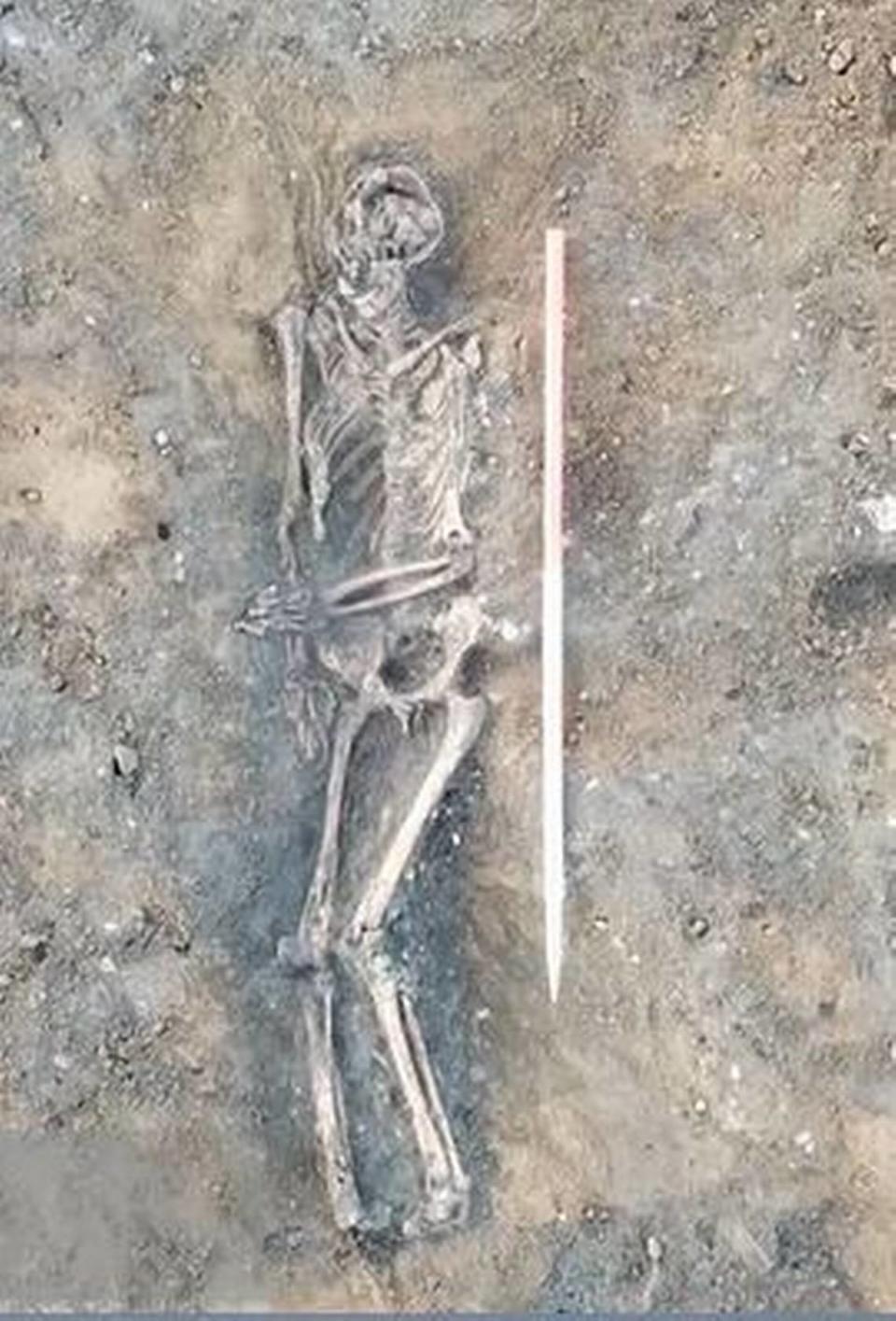Ruins of medieval abbey have eluded experts. Unearthed skeletons might provide clues
Ahead of construction in Northern Ireland, a team of archaeologists conducted a “very complex” excavation.
“Looking at the site before we started, it was clear that this was an area that could have good archaeological potential,” Chris Long, who works for Gahan & Long Archaeological Services, which oversaw the excavation, told The Irish News. “However there was always the belief that the former factory may have removed everything.”
As the team explored the site, their suspicions were confirmed when they “uncovered a remarkable discovery,” according to a March 5 news release from the company.
Archaeologists unearthed 146 skeletons — including 120 complete skeletons. The remains belonged not only to men, but to women and children too.
Uncover more archaeological finds
What are we learning about the past? Here are three of our most eye-catching archaeology stories from the past week.
→ Emerald green artifact 'ignored' for 80 years was 'rare' 500-year-old find
→ 2,400-year-old underground discovery stumped experts for decades — until now
→ Stone sarcophagi went unopened for 600 years — until now. See what was found inside
“This diverse mix of individuals adds a fascinating dimension to the discovery,” the company said in its release.
“As an archaeologist, this is the best,” Long told ITV News. “It’s a medieval site, it’s old and it’s really exciting — so all the days standing out in the wind and rain make it worth it for something like this.”
Most of the remains were buried in the Christian tradition with an east-west orientation, but some were buried unusually north-south, Long told The Irish News.
“This may reflect the burial of executed criminals from nearby Gallows Green, who would have been denied a full Christian burial,” he said.
Experts believe the skeletons are remains of people who were buried in the cemetery of the Abbey of the Holy Cross, also known as Woodburn. The discovery marks the first time physical remains of the medieval abbey have been found.
The church was built in 1326 and was partly demolished in 1558, according to historical records, The Irish News reported. It was fully destroyed by the early 1600s.
“What makes this discovery truly unprecedented is that it is the first time any physical remains of the Abbey or its complex have been found. This breakthrough opens up new avenues for research and understanding of this historical site,” the archaeological service said.

“This site was long known to have been home to Holy Cross Abbey but as it had been erased there was no evidence,” Mary Connolly, a member of the Carrickfergus Historical Society, told the Irish News. “It is wonderful that this excavation has uncovered such a wealth of information.”
The church played a central role during medieval life, Andrew Gault, the Department for Communities’ senior inspector of historic moments, told ITV News.
“During the 14th and 15th century this would have been one of the most important ecclesiastical site in the medieval earldom of Ulster,” Gault said, according to the outlet. “Going forward we’ll hopefully work with the developer to see if the location of the Abbey can be marked in some way to commemorate the Abbey and the people who were buried there.”
Carrickfergus is in northeastern Northern Ireland, about a 12-mile drive from Belfast.
Remains of ancient wooden coffins — holding babies and children — unearthed in Hungary
700-year-old church — teeming with rare religious artifacts — discovered. See finds
Someone lost a gold ring 500 years ago. It was just found — in nearly new condition

